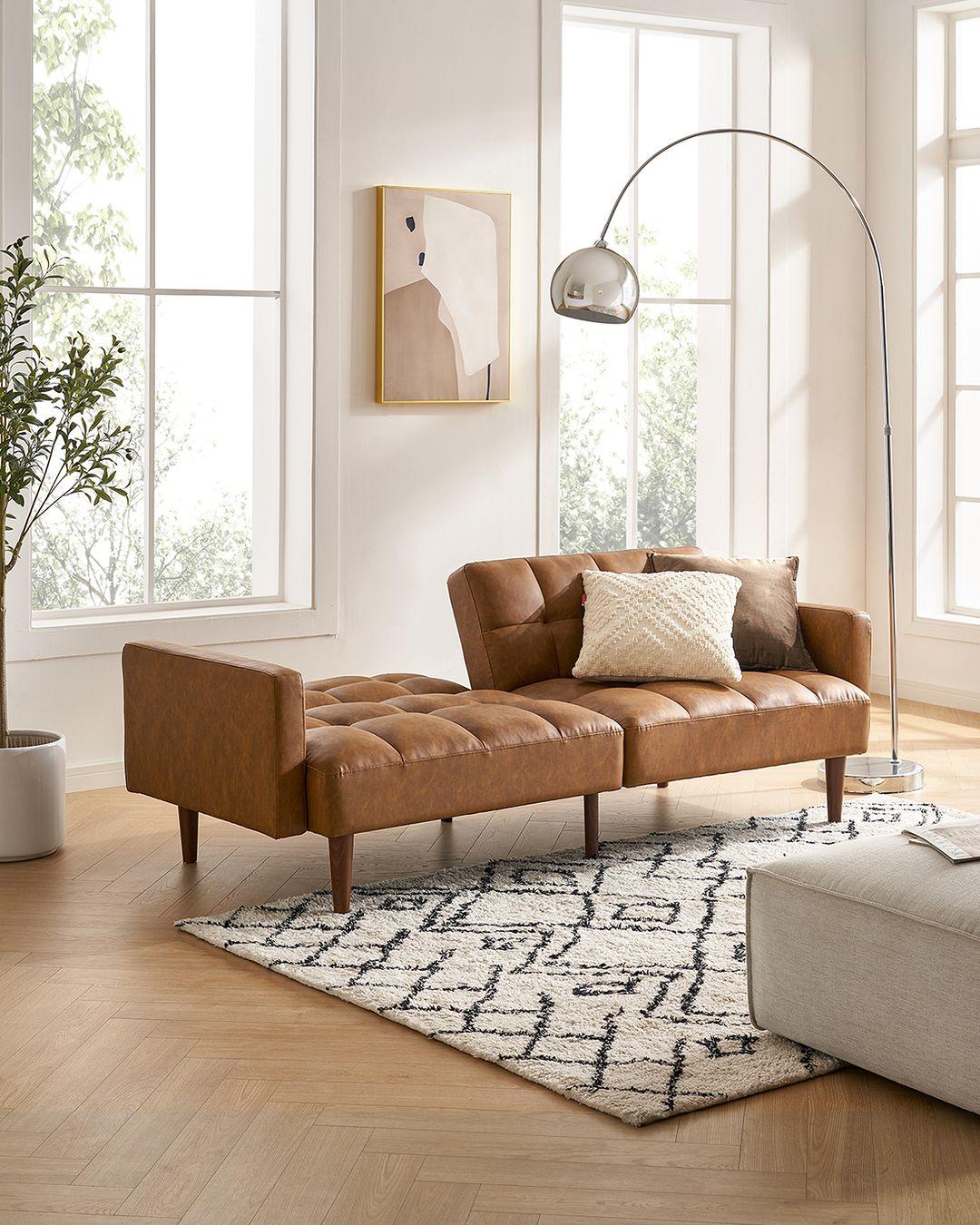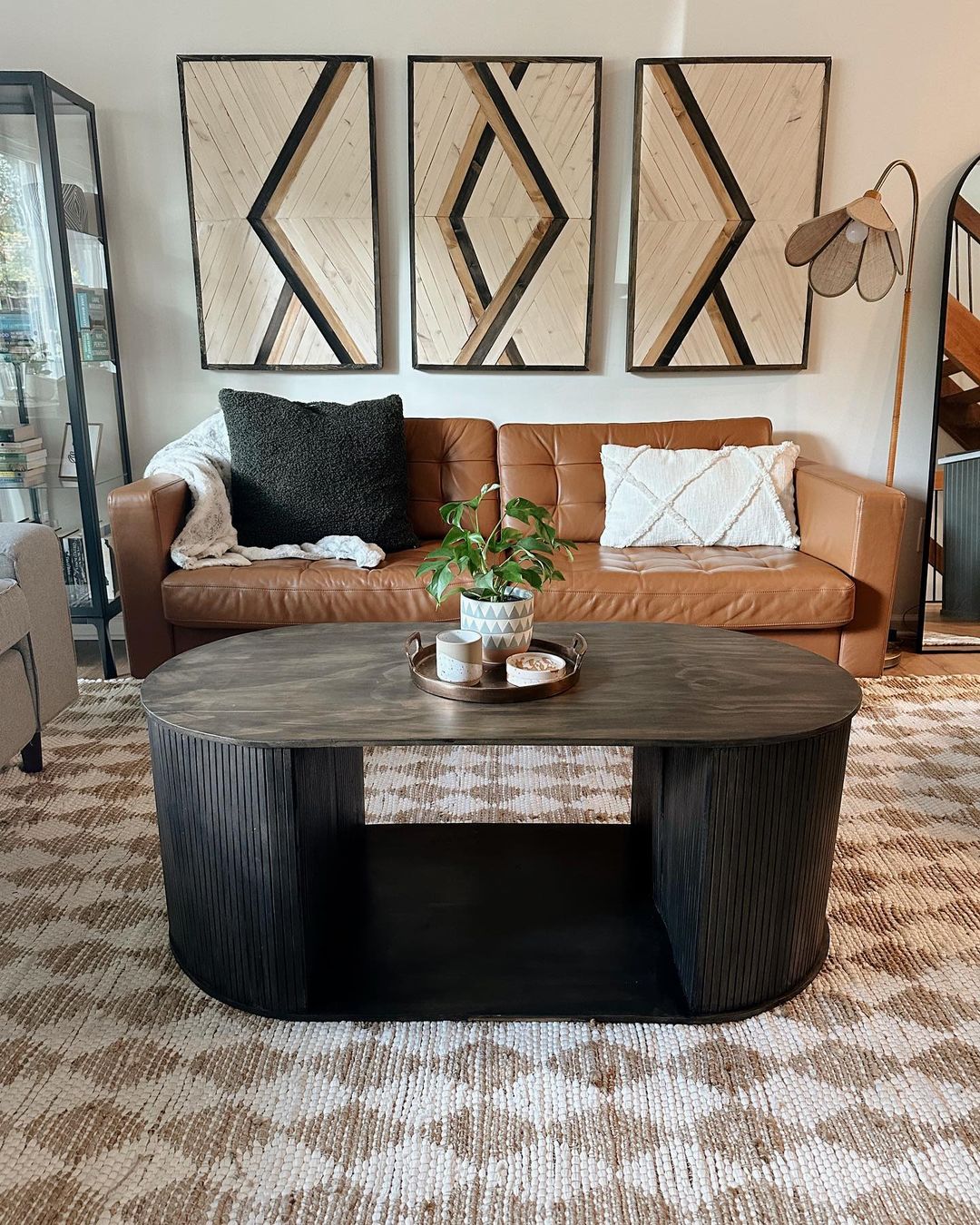
There’s nothing quite like the luxurious feel of a leather couch — that soft, supple surface that adds warmth and sophistication to your space.
But what happens when you notice a scratch, whether from a playful pet or an accidental brush against the surface? Before you panic, rest assured that scratches on leather can often be repaired, bringing your beloved furniture back to its former glory.
In this ultimate guide, we’ll explore tried-and-true methods to fix those pesky scratches and keep your leather looking flawless for years to come. Let’s dive in!

Image by leopard_print_stairs
Read – 25 Lovely Tan Couch Living Room Ideas You Will Love
How To get Scratches Out Of Leather Couch
Getting scratches out of a leather couch might seem tricky, but with the right steps, you can make it look good as new. Here’s a simple breakdown of how to tackle both light and deep scratches:
Fixing those scratches isn’t just about a quick patch-up—it’s about keeping your leather couch looking great for years to come. Whether it’s a small surface scratch or a deeper cut, there are easy methods to restore the leather’s smooth look. With the right approach, not only can you repair the damage, but you’ll also learn how to care for your couch in the long run!
Here’s how you can get rid of scratches on a leather couch and maintain it like a pro.
Understanding Leather Scratches:
Leather is tough, but it can still get scratched pretty easily. Whether it’s from sharp objects, pet claws, or even something as small as a zipper, scratches happen. The key is understanding the type of scratch you’re dealing with.
Light scratches usually just graze the surface, while deeper ones can cut into the leather. Knowing the difference helps you pick the right method for fixing it, depending on how bad the scratch is.
Dana K. White, author of A Slob Comes Clean, suggests, “For minor scratches, using a leather balm or even olive oil can help. Just apply it gently in circular motions and buff until the scratch is less visible.”
 Image by flamantfriends
Image by flamantfriends
Read – 25 Amazing And Beautiful Brown Leather Couch Ideas You Will Love
Repairing Light Scratches:
Light scratches on leather are often superficial and relatively easy to address, but they still need care to ensure the scratch doesn’t become a more permanent mark.
- Clean the Area Gently
Before treating the scratch, clean the area with a leather cleaner. This step is crucial because dirt or oils left on the surface can be worked into the scratch, making it worse. Opt for cleaners specifically formulated for leather, as harsh chemicals can dry out or discolor your couch. - Leather Conditioner: More Than Just Shine
Leather conditioner isn’t just for aesthetic purposes. It helps restore moisture, elasticity, and the leather’s natural oils. Apply a conditioner to the scratched area using circular motions with a soft cloth. The act of conditioning can help the leather regain some of its original texture and color, often reducing the visibility of the scratch.
 Image by curatedbycammie
Image by curatedbycammie
Melissa Maker, founder of Clean My Space, says, “For light surface scratches, use a bit of leather conditioner and gently buff in circular motions with a soft cloth. It helps the leather absorb the conditioner and reduces the appearance of the scratch.”
- The Power of Heat and Oils
If the scratch persists, try gently warming the area using a hair dryer on a low setting. This helps open the leather’s pores, allowing oils (like olive oil or baby oil) to penetrate deeper into the material. Use sparingly—too much oil can leave stains. Let the oil sit for a while, then buff with a microfiber cloth in soft, circular motions.
 Image by mopioinc
Image by mopioinc
Read – 20 Chic And Wild Green Couch Living Room Ideas
Dealing with Deep Scratches:
Deeper scratches are more than surface-level damage—they can expose the leather’s underlying layers or even cause small rips. These require a more strategic approach with specialized tools.
- Deep Cleaning and Prepping the Leather
For deep scratches, it’s critical to thoroughly clean the area. Use a leather-safe cleaner, and focus not just on the scratched section but the surrounding area as well. Dirt embedded around the scratch can make repairs uneven or less effective. - Leather Repair Kits: A Professional Approach
For deeper scratches, a leather repair kit is your best bet. These kits come with filler compounds that can fill the gaps created by the scratch. After applying the filler (following the kit instructions), let it dry completely. This step not only hides the scratch but restores the leather’s structural integrity.
 Image by anita.mackenzie
Image by anita.mackenzie
Becky Rapinchuk, creator of Clean Mama, advises, “A leather repair kit is ideal for deep scratches. It typically includes fillers and colorants that match your leather. Always test it on an inconspicuous area first to ensure it blends well.”
- Customizing the Color
One of the biggest challenges with deeper repairs is color matching. Use the color dye from your leather repair kit to carefully match the repaired section with the surrounding leather. Multiple thin layers of dye often yield better results than a single heavy application. Always allow the dye to dry between layers for a more natural finish. - Sealing the Repair for Longevity
After the filler and color dye have set, seal the area with a finishing product, typically provided in the repair kit. This helps protect the repaired area from future damage and blends the repaired section into the rest of the couch, creating a seamless look.
Toni Hammersley, from A Bowl Full of Lemons, recommends, “For deeper scratches, apply a leather filler and follow up with a leather dye that matches your couch. Take your time to ensure the filler dries properly before adding the dye.”
 Image by home_with_candy_sky
Image by home_with_candy_sky
Read – 20 Dramatic And Bold Black Couch Living Room Ideas
Preventative Measures to Keep Leather Looking Great:
- Trim pet claws regularly to reduce the chances of them causing accidental scratches.
- Use furniture protectors or slipcovers if your leather couch is in a high-traffic area, especially if pets are around.
- Avoid placing sharp or rough objects like keys, zippers, or tools near the couch.
- Regular leather conditioning is essential. Leather, like skin, can dry out over time, leading to cracks and further vulnerability to scratches. Conditioning every six months to a year keeps your couch supple and more resistant to damage.
Becky Rapinchuk, founder of Clean Mama, emphasizes the importance of keeping leather moisturized: “Regularly conditioning your leather helps maintain its softness and prevents cracks, which can eventually lead to deeper scratches”
 Image by originalsfurniture
Image by originalsfurniture
Additional Insights on Leather Care:
The environment where your leather couch resides plays a role in its longevity. Leather can fade or crack when exposed to direct sunlight or heat for prolonged periods.
Position your couch away from windows or use blinds to reduce sun exposure. Also, monitor the humidity levels in your home—excessive dryness can cause leather to dry out and crack, while too much moisture can lead to mold growth.
Investing in a leather-protecting spray can also help protect against stains, spills, and future scratches.
Katie Berry from Housewife How-Tos suggests: “Always use a soft, microfiber cloth when dusting your leather sofa, as harsher materials can create small scratches over time”
 Image by akminteriordesign
Image by akminteriordesign
Read – 25 Beautiful And Lovely Pillows For Beige Couch Ideas
Final Thoughts:
Maintaining the appearance of a leather couch is a combination of proper care and strategic repair. By addressing scratches as soon as they appear, you prevent further damage and extend the life of your furniture.
With the right knowledge and tools, scratches don’t have to be a cause for panic—instead, they’re an opportunity to reinforce your couch’s durability and keep it looking fresh for years to come.

